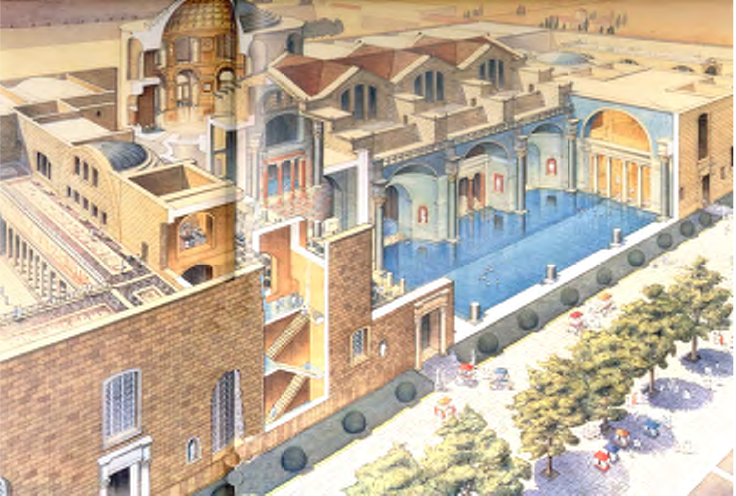Karrie
Princess of Baalia and Senator to the Galactic Sen
The Osin Baths:

http://blog.ilgiornale.it/franza/files/2014/04/baths_caracalla_21337052460394_zpsa3aef598.png

http://www.pegasus-online.be/pelckmans_data/cultuur/caput2/exploratie/thumbnails/caracalla1.jpg
Considered to be on the oldest still yet surviving places in Seano Naimi. They have been the heart of the city for millennia. It is rumored that the city was laid out then built around the site of the Baths. Over the years the city continued to grow, culminating into the current capital city.
The building which houses the Baths are from what is called the Ancestoral Period and those in the immediate vicinity are from the Classical Architectural Period. There are three Architectual Periods and they are Ancestoral, Classical and Modern. Every Baalian child learns about the three Periods when they are of school age.
The Ancestoral Architectural Period refers to the time of the Jemhau and Kymni, those from who most Baalians are descended. Some refer to the Osin Baths by its ancient Jemhau name, Thermae Arum Osin or Baths of Osin. Themeaning of Osin has regretfully been lost to the sands of time.

http://blog.ilgiornale.it/franza/files/2014/04/baths_caracalla_21337052460394_zpsa3aef598.png

http://www.pegasus-online.be/pelckmans_data/cultuur/caput2/exploratie/thumbnails/caracalla1.jpg
Considered to be on the oldest still yet surviving places in Seano Naimi. They have been the heart of the city for millennia. It is rumored that the city was laid out then built around the site of the Baths. Over the years the city continued to grow, culminating into the current capital city.
The building which houses the Baths are from what is called the Ancestoral Period and those in the immediate vicinity are from the Classical Architectural Period. There are three Architectual Periods and they are Ancestoral, Classical and Modern. Every Baalian child learns about the three Periods when they are of school age.
The Ancestoral Architectural Period refers to the time of the Jemhau and Kymni, those from who most Baalians are descended. Some refer to the Osin Baths by its ancient Jemhau name, Thermae Arum Osin or Baths of Osin. Themeaning of Osin has regretfully been lost to the sands of time.


